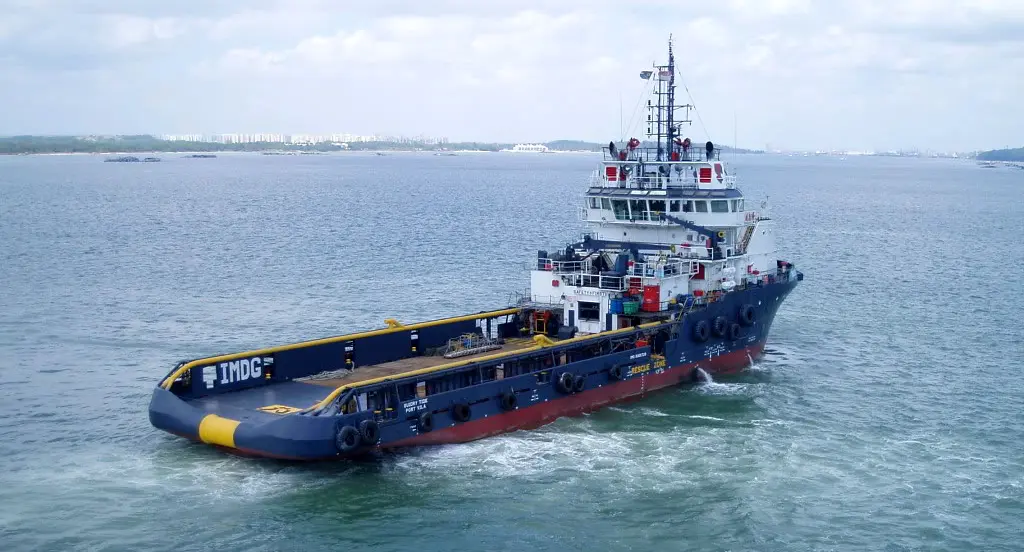Tidewater and Gulfmark to Merge, Creating Offshore Supply Vessel Leader
U.S.-based offshore supply vessel companies Tidewater (NYSE: TDW) and GulfMark Offshore (NYSE: GLF) announced Monday that their respective Boards of Directors have unanimously approved a definitive agreement to combine the two companies.

U.S.-based offshore supply vessel companies Tidewater (NYSE: TDW) and GulfMark Offshore (NYSE: GLF) announced Monday that their respective Boards of Directors have unanimously approved a definitive agreement to combine the two companies.
The combination would create a global leader in the offshore support vessel sector that is “positioned to capitalize on significant cost synergies and superior growth opportunities as the OSV sector recovery gains traction,” the companies said in a joint press release.
The combination will create the industry’s largest fleet and the broadest global operating footprint in the OSV sector, “with an unmatched ability to support customers across geo-markets and water depths”, according to the press release. The financial strength and operating footprint of the combined company will also position it to sustain through-cycle market leadership, it states.
The transaction is expected to close in the fourth quarter of 2018.
Gulfmark operates 72 offshore vessels across the globe, including the North Sea, Southeast Asia, Brazil and the Gulf of Mexico, according to its website.
With more than 300 vessels, Tidewater has one of the biggest OSV fleets in the offshore oil and gas industry. Approximately 90% works internationally.
Under the terms of the all-stock agreement, GulfMark stockholders will receive 1.100 shares of Tidewater common stock for each share of GulfMark common stock held by them. Each GulfMark noteholder warrant will be automatically converted into the right to receive 1.100 Tidewater shares, subject to Jones Act restrictions on maximum ownership of shares by non-U.S. citizens.
Collectively, GulfMark security holder will have 27% ownership of the combined company upon closing, or 26% on a fully-diluted basis.
The combined company will have a equity market capitalization of approximately $1.25 billion, both based on the Tidewater closing stock price of $30.62 on July 13, 2018.
Concurrent with the closing, $100 million of existing GulfMark debt is expected to be repaid.
The combined company will be operated under the Tidewater brand and will be led by Tidewater CEO John Rynd. Upon the closing of the combination, the Tidewater Board of Directors will be expanded to ten seats by adding three directors selected by GulfMark. The transaction is expected to close in the fourth quarter of 2018, subject to customary closing conditions, including stockholder approval of both companies.
John Rynd, Tidewater President and CEO said, “By combining our fleets and shore-based activities we will be better able to provide customers with access to modern, high-specification vessels while maintaining a strong commitment to safe operations and superior, cost-effective customer service. The transaction preserves Tidewater’s strong financial profile and allows the company to fund both organic growth and possible additional acquisitions.”
Mr. Rynd continued, “Our companies share similar values in regards to safety, compliance and customer service, and we expect the integration process to be smooth. We look forward to joining forces with the talented GulfMark team and building on our long history of supporting customers wherever they may need us, providing our employees with a safe and reliable place to work and delivering solid returns for our stockholders.”
Quintin Kneen, GulfMark President and CEO said, “At GulfMark, we have been longstanding advocates for consolidation of the OSV industry. This transaction is an important first step in that process. The combined company will be better positioned to build upon GulfMark’s strong track record in the recovering North Sea region. The combined company’s global operating footprint also provides scope for significant scale-based economies and improved utilization of our fleet by redeploying under-utilized vessels across the combined company’s broader operating footprint.”















![AIRBUS A380 [MORE THAN 600 PASSENGER’S CAPACITY PLANE]](https://cdn.tinn.ir/thumbnail/4jCp4EQvCU0b/IjHVrSYQrIAqIzXuTzADR7qLYX4idQT4nfq__26E5SCUPLMqfhWkWajvuO9Wfq1ql1TjV4dhkrHliNQU82kMpo2NNftT_NGEwHc9KXtN_rk731bmifa2IQ,,/airbus-a380-structure1.jpg)

Send Comment